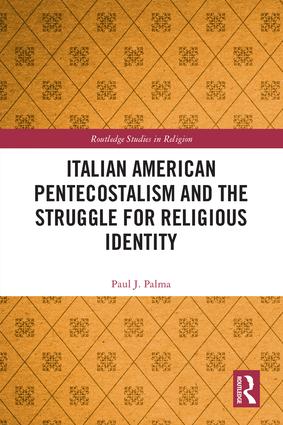The Global Reach and Lasting Legacy of Italian Pentecostalism: An Interview with Paul Palma

Paul J. Palma, Italian American Pentecostalism and the Struggle for Religious Identity, Routledge Studies in Religion series (Routledge, 2019).
Italian Pentecostals were also among the founders of Pentecostalism in South America, specifically Brazil and Argentina. The Congregação Cristã no Brasil (Por. for Christian Congregation in Brazil) is the largest Italian Pentecostal founded denomination in the world, with a membership of about 2.5 million. Churches from this denomination, via reverse missions, organized a sister network of churches across the United States, Canada, and Mexico, known as the Christian Congregation in North America. The Asamblea Cristiana de Argentina (Sp. for Christian Assemblies of Argentina), and the Iglesia de Dios (Sp. for Church of God) in Argentina and Uruguay, are also indebted to the pioneering efforts of Italian Americans from the Chicago mission.
Also noteworthy is the Chiese Cristiane Italiane nel Nord Europa (Italian Christian Churches in Northern Europe). This denomination reaches the Italian diaspora throughout Belgium, France, Germany, England, Luxembourg, Switzerland, and the Ukraine.
Pneuma Review: In your book you mentioned that beginning in 1910, Chicago became the major center for Pentecostal international missions. What caused Chicago to rise to prominence?
Paul Palma: In addition to Durham, who was baptized in the Spirit at Azusa Street, the Pentecostal pioneer Charles Fox Parham had a notable impact on the surging prominence of Chicago. Parham’s preaching helped stoke the Pentecostal work at Durham’s North Avenue Mission as well as the awakening at John Alexander Dowie’s Zion City, just north of central-city Chicago.
The prior influence of the Reformed evangelical revival in Chicago, peaking in the late nineteenth century with the work of D. L. Moody and R. A. Torrey, further nourished the seedbed that produced the Chicago Pentecostal revival. The ministry of Moody and Torrey overlapped directly with members of the Assemblea Cristiana. In addition to these influences, the landscape of the country, with Chicago serving as a strategic stopping points for coast to coast travel, facilitated the city’s exposure to Pentecostal missionaries and evangelists.
Pneuma Review: What countries have been touched by the Italian Pentecostal Movement?
Paul Palma: As alluded to, the historic centers of the Italian Pentecostal Movement were the US-Canadian churches, the churches of the Southern Cone (chiefly Brazil, Argentina, and Uruguay), and Italy. Yet the movement, bearing a strong doctrinal emphasis on missions, much after the framework of the AG, impacted many more nations, canvassing regions across each inhabitable continent of the globe.
Alongside the historic centers noted is what I would describe as a second tier of impact belonging to the countries of Northern Europe, Australia, and India. The work in Northern Europe and Australia followed the circuit of Italian diaspora in the twentieth century. Among the same wave of Italians migrating to North and South America during the mass labor migration from 1870-1920, were a large number whose paths brought them to countries just north of Italy, alongside some who had been diverted to Australia. After North America, Argentina, and Brazil, Australia was the most popular transoceanic destination for Italian migrants.
India became the largest mission field of Italian American Pentecostals. The movement expanded in India, not principally among the Italian diasporic network but among the country’s natives. By 2001, the CCNA work in India consisted of 1,500 churches, a leper colony, a college, a hospital, trade schools, and several Christian academies. The Philippines became another important center of outreach, with more than 150 congregations founded by 1996. The movement has also had a notable impact on Korea, South Africa, Nigeria, Greece, Portugal, the Dominican Republic, Peru, Venezuela, Chile, Bolivia, Colombia, Haiti, and Barbados.
Category: Church History, Fall 2019


